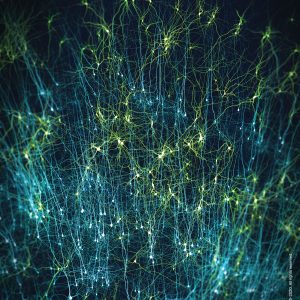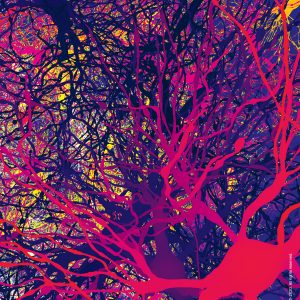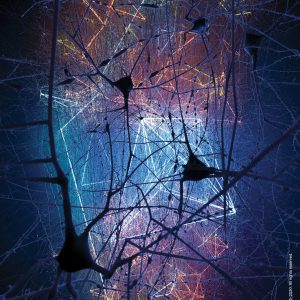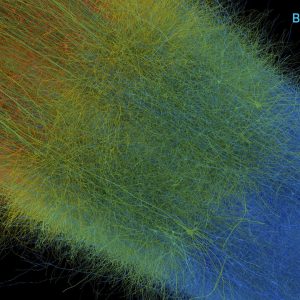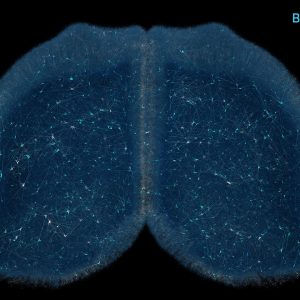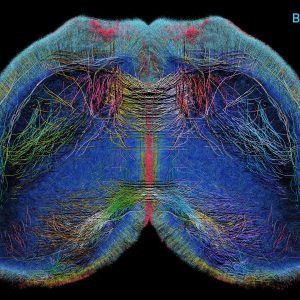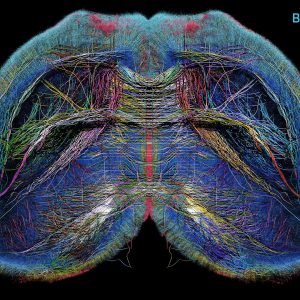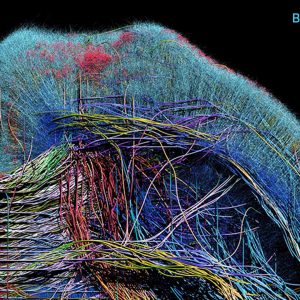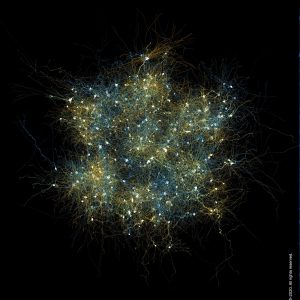A key element within Blue Brain’s data-driven research approach is Scientific Visualization.
Scientific Visualization transforms the digital models of brain tissue and large-scale simulations into representations that can be inspected by scientists. In a way, Scientific Visualization is very similar to what a microscope is for an experimentalist, it makes things visible to the researcher’s eye. In the case of a microscope, the object of study is too small to be seen and the microscope enlarges the object. In other imaging devices, such as an MRI machine, the resulting image is an assembly of various spin measurements into a visual representation by a computer. In analogy, Scientific Visualization for in silico neuroscience makes aspects of the models visible that otherwise would only exist as numbers in a computer. For example, we can attribute a color to a particular type of neuron to discriminate one neuron from another. Or, we can give a specific color to the electric potential of a neuron, making it possible to “see” the electrical integration neurons perform.
What Scientific Visualization ensures in all these cases is that the transformation of the source data to the output image is quantitative, controlled and reproducible. This allows the scientist to reason on the resulting image and distinguishes Scientific Visualization from illustrations or neuro-art, where the creator has more freedom of choice. In Scientific Visualization – apart from certain assumptions and choices of the visualization process (e.g. from where you are looking at the model, or the choice to color neurons of type 1 in red, and type 2 in blue) – the object that is visualized (in our case the model) then determines the final visualization of it without further changes. This way, a scientist can easily spot problems in the model (e.g. a neuron being upside-down to take a simple example), or discover properties of the model that are obvious to the human eye, but not immediately obvious from just looking at the numbers (e.g. the timing and location of traveling waves of neuronal activity), but also explain to other scientists and audiences in a visual way about the model and its simulated behavior. These three uses of Scientific Visualization are typically referred to as the three “D”s, Debug, Discovery and Dissemination.
To support the scientific research activities of the Project, Blue Brain has developed a state-of-the-art modular visualization architecture for large data visualization over a wide range of use cases to deliver the necessary ability to view, analyze, validate, troubleshoot and communicate the detailed brain tissue models developed in the Blue Brain Project. The three main software solutions developed are freely available as open-source software: Blue Brain Brayns, RTNeuron, and NeuroMorphoVis; they can be found here – https://portal.bluebrain.epfl.ch/resources/software/vizualization/
The images and videos in the gallery below show some examples of our visualizations with more to be found in Blue Brain publications and across our online channels.
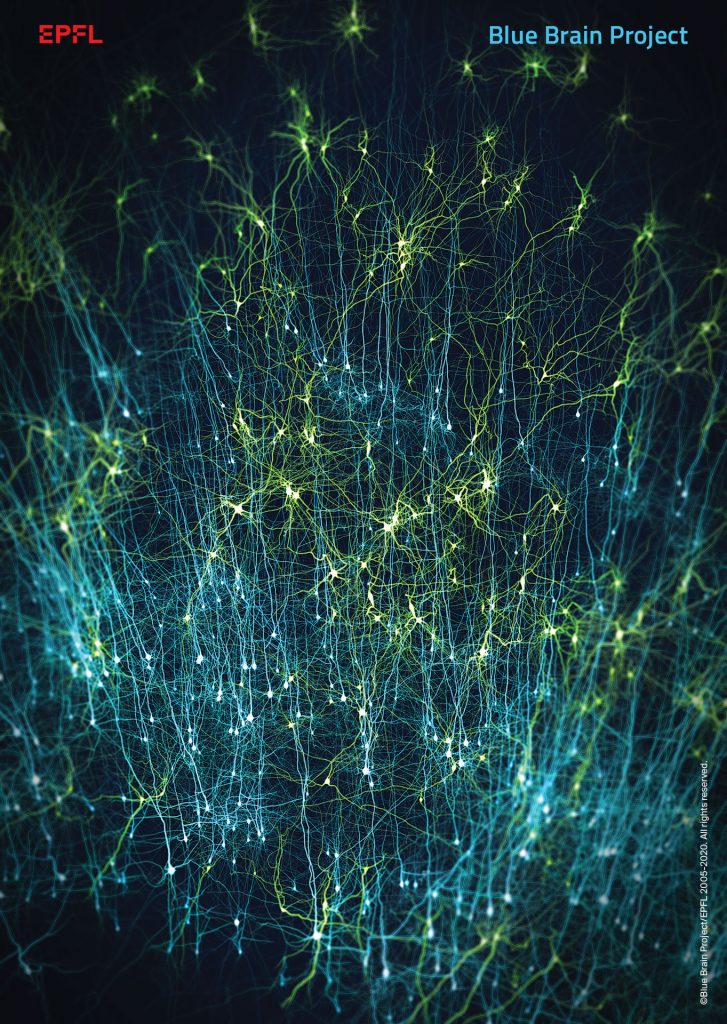
A forest of neurons grown artificially with various morphology types in the neocortex. Pyramidal cells are shown in blue and interneurons in green.
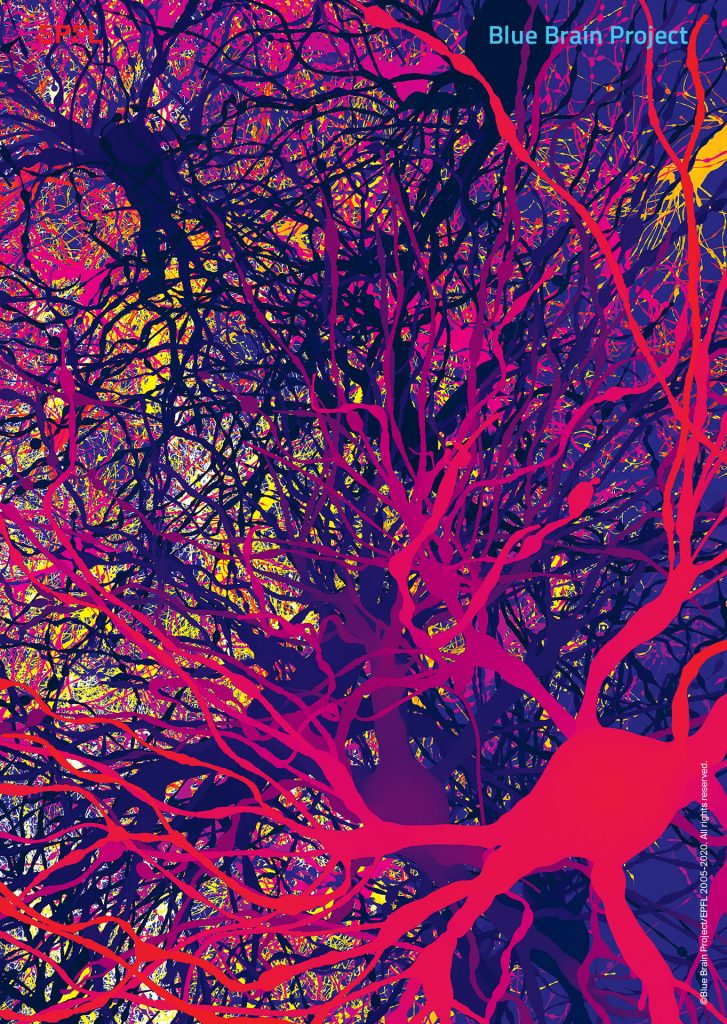
A close up view of a digital circuit of neurons inside the thalamus. This seemingly chaotic forest is actually a very organised set of interconnected cells.
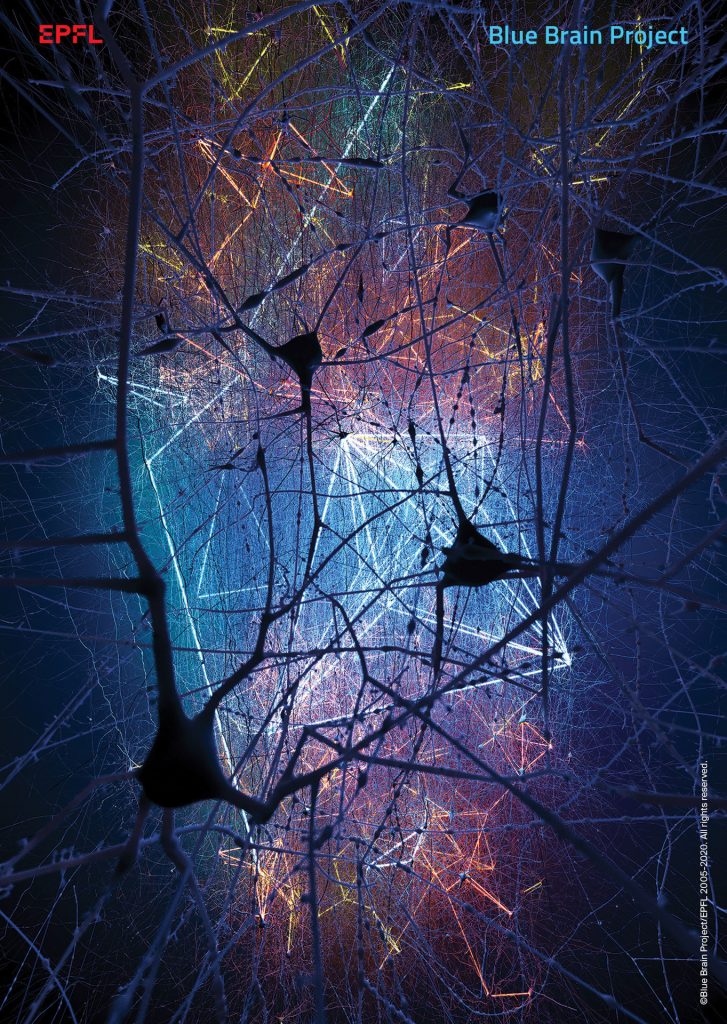
Connectivity among neurons in digital circuits reveals patterns. Neurons have preferences in connecting to others. Some of the patterns are visible here such as the rich-club in the middle.
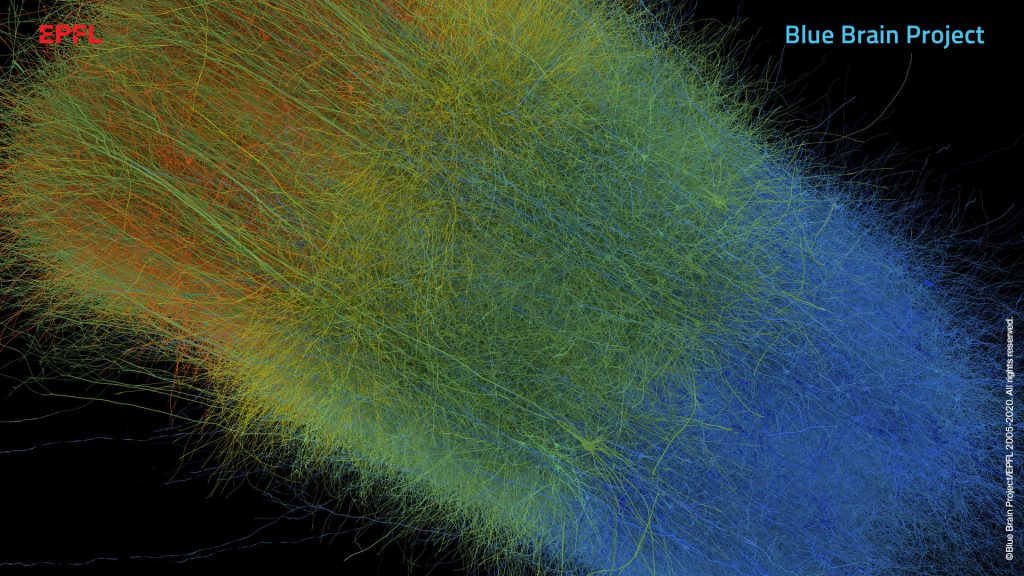
The O1 microcircuit (Neocortical column) rendered at 3% density. Neurons are colored by morphological types.
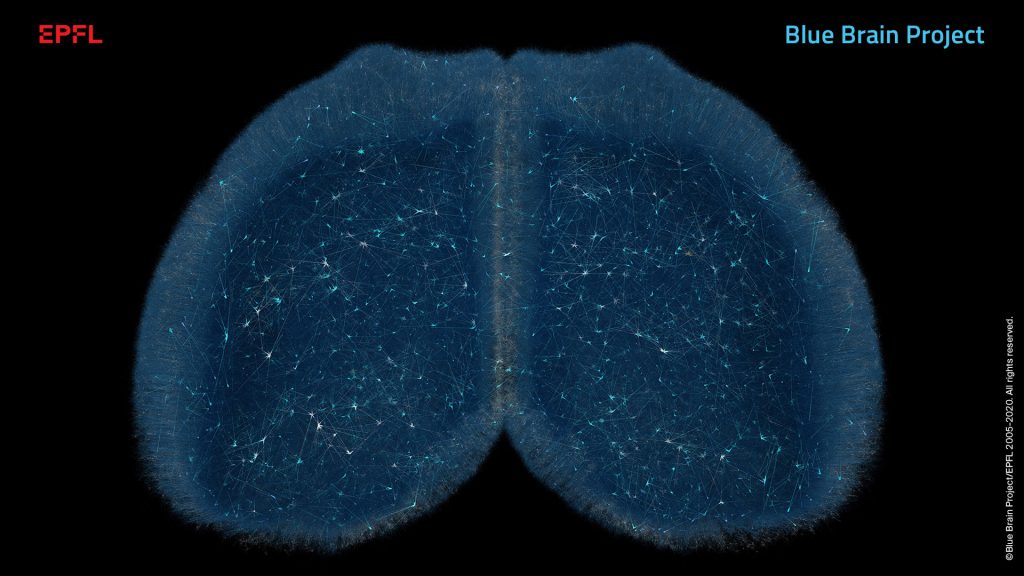
Neurons are colored by morphological types. Some connections have been added between neurons to illustrate the connectome of that region of the brain. (View from below of the neocortex rendered at 3% density.)
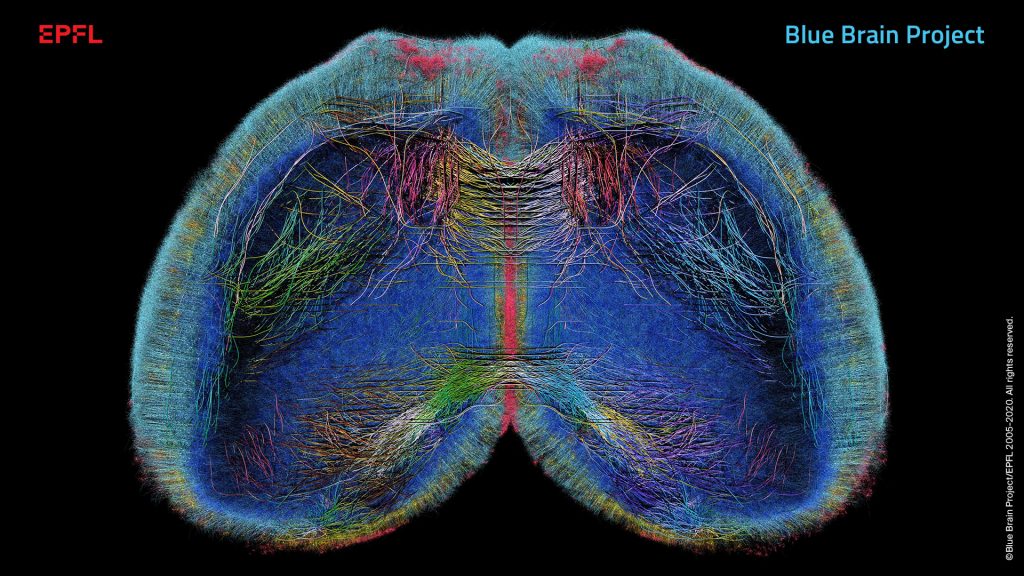
View from below of the neocortex rendered at 3% density. Long distance connections (white matter) between regions of the neocortex. Neurons are colored by morphological types. Neurons are algorithmically synthetized.
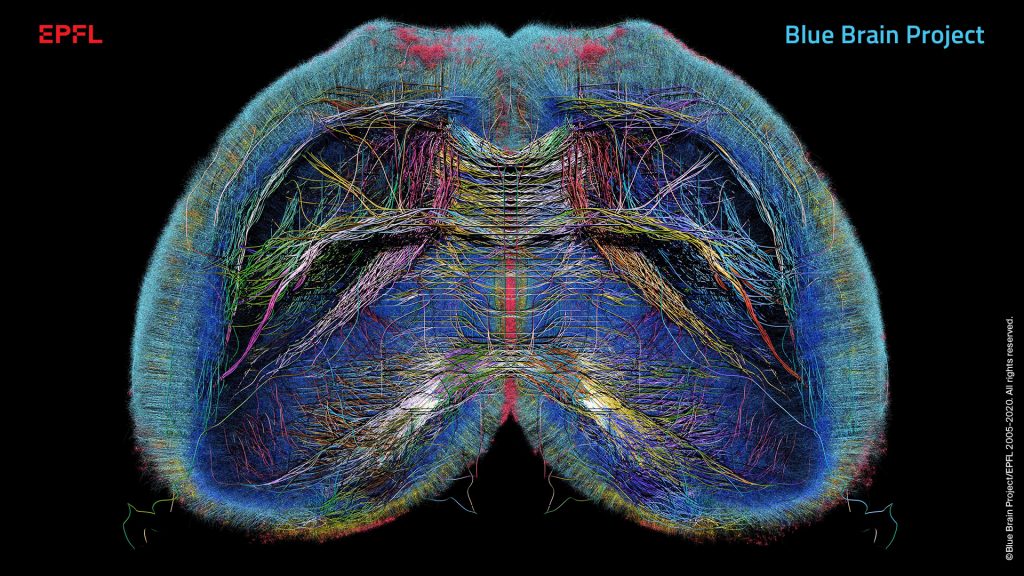
View from below of the neocortex rendered at 3% density. Long distance connections (white matter) between regions of the neocortex. Neurons are colored by morphological types and are algorithmically synthetized.
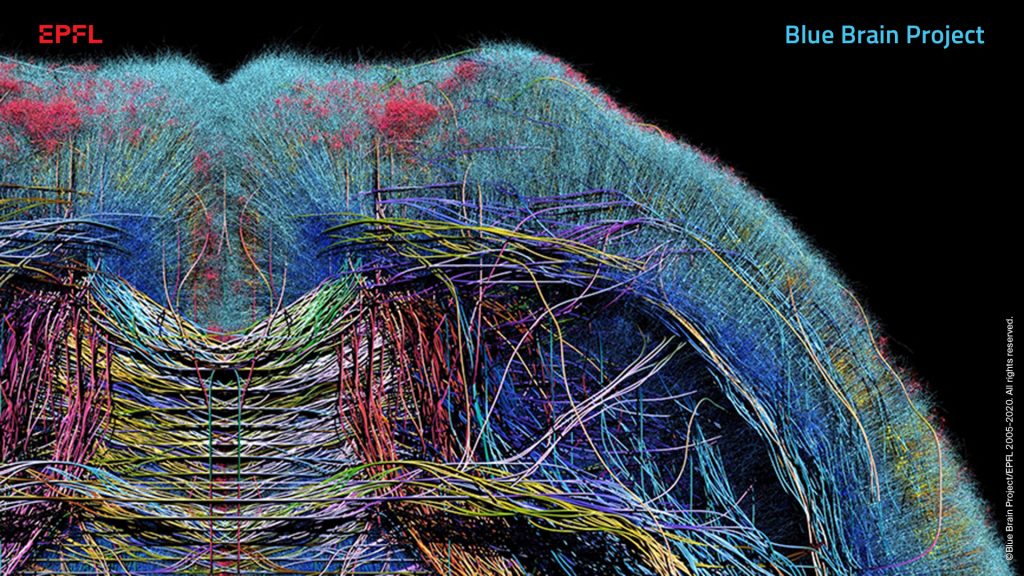
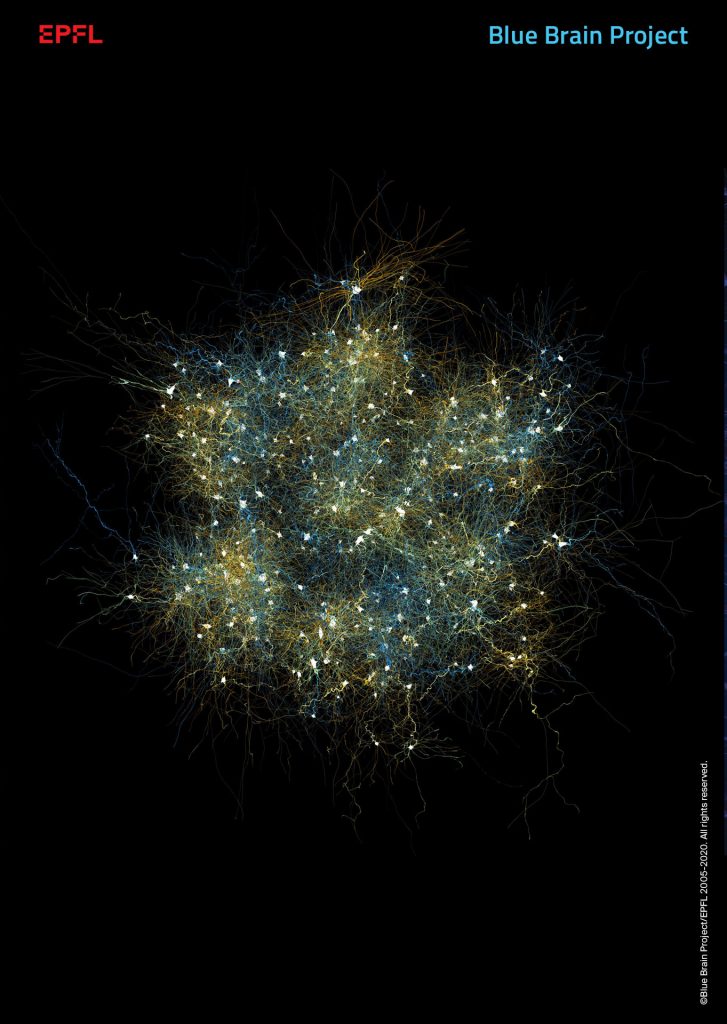
View of the O1 microcircuit (neocortical column) from above. Neurons are colored by morphological types.
Before downloading images and video, please read and abide by our copyright policy. copyright information.pdf
For additional image requests, please contact Blue Brain’s Communications Manager.
Videos
Blue Brain finds the secret to how neurons in the mouse neocortex form billions of synaptic connections
The Blue Brain Project Movie
Reconstruction and simulation of neocortical microcircuitry
Video abstract for the reconstruction and simulation of neocortical microcircuitry publication.
A glucose-COVID-19 hypothesis
In normal conditions, the lungs have the necessary immune defense to contain SARS-CoV-2 and avoid spread of the infection. If elevated, glucose impairs this primary defense system making ideal conditions for the SARS-CoV-2 to invade the pulmonary cells and spread into the rest of the body.
